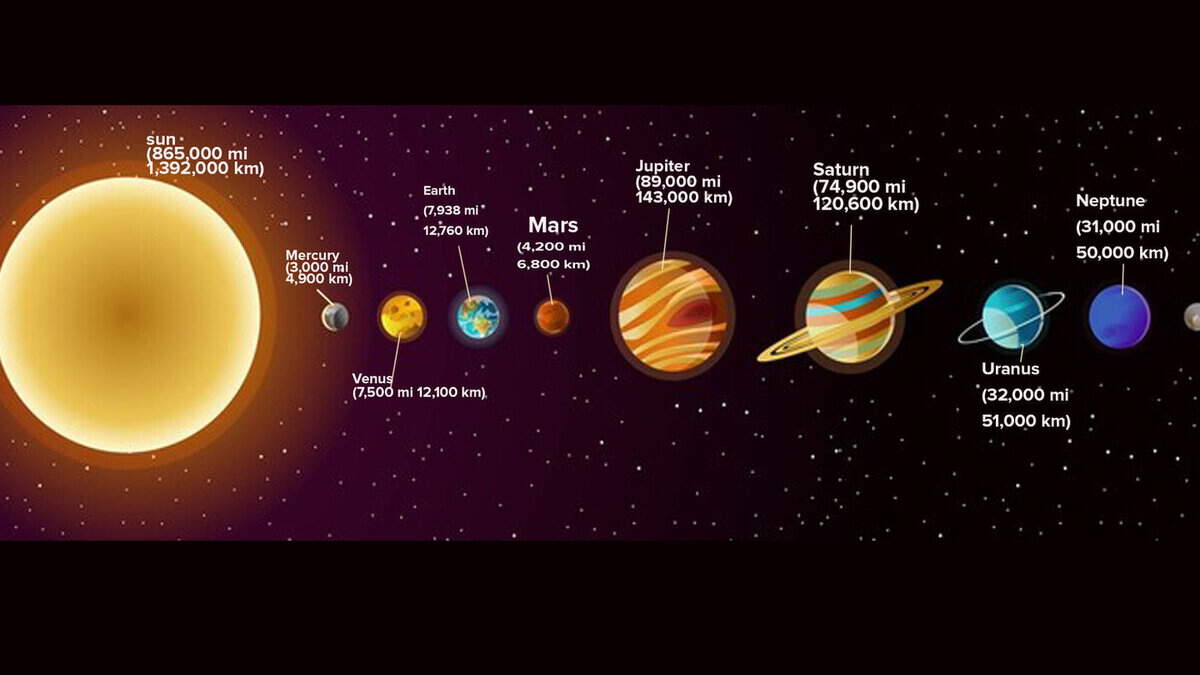Interestingly enough, not everyone will be able to answer the question of which planet is closest to Earth. However, the answer is quite simple – Venus. It is the second planet from the Sun, while Earth is the third. The distance to its other neighbor, Mars, is much greater.
When Venus and Earth come close together, the minimum distance between them can shrink to just 38 million kilometers. Before and after this event, Venus has the largest deviation from the Sun and appears the brightest in our sky. When the planets move apart to their maximum distance, they are separated by 261 million kilometers.
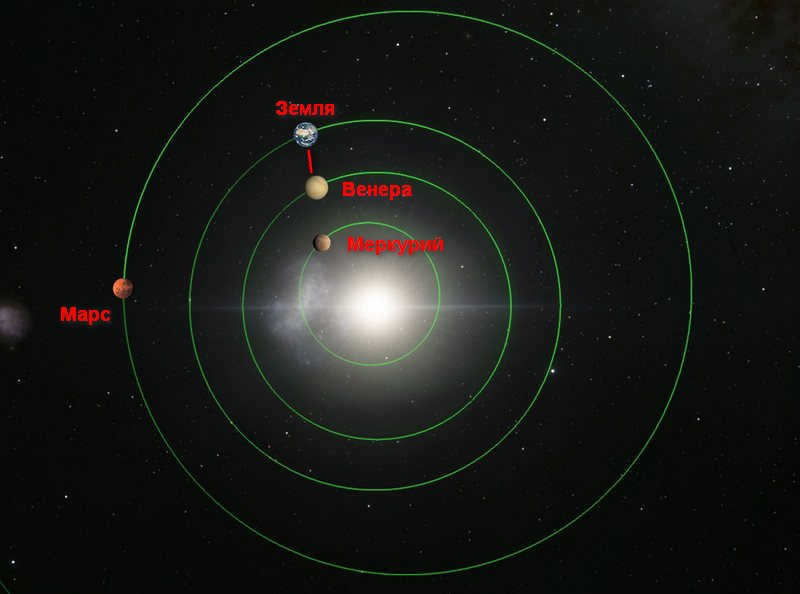

Venus is the closest planet to Earth in this position, with a distance of 38 million kilometers.
What is the nearest planet
Despite being referred to as Earth’s sister, Venus is actually a completely different world that shares no similarities with what we are familiar with. It is roughly the same size as our own planet, but that is where the similarities end.
Venus has a very thick atmosphere that extends to a height of 350 kilometers. In comparison, a height of 100 kilometers is officially considered space on Earth. The atmosphere of our neighboring planet is composed of 96% carbon dioxide, with a massive layer of clouds made up of sulfuric acid.
There are also acid rains present, although they do not make it to the surface as they evaporate due to the extreme heat. As a result, there is a dense layer of fog beneath the clouds, creating a barrier that prevents the sun’s rays from penetrating for about 50 kilometers. This has led to a significant greenhouse effect below this layer, with surface temperatures reaching as high as 467 degrees and atmospheric pressure surpassing that of Earth by 90 times.
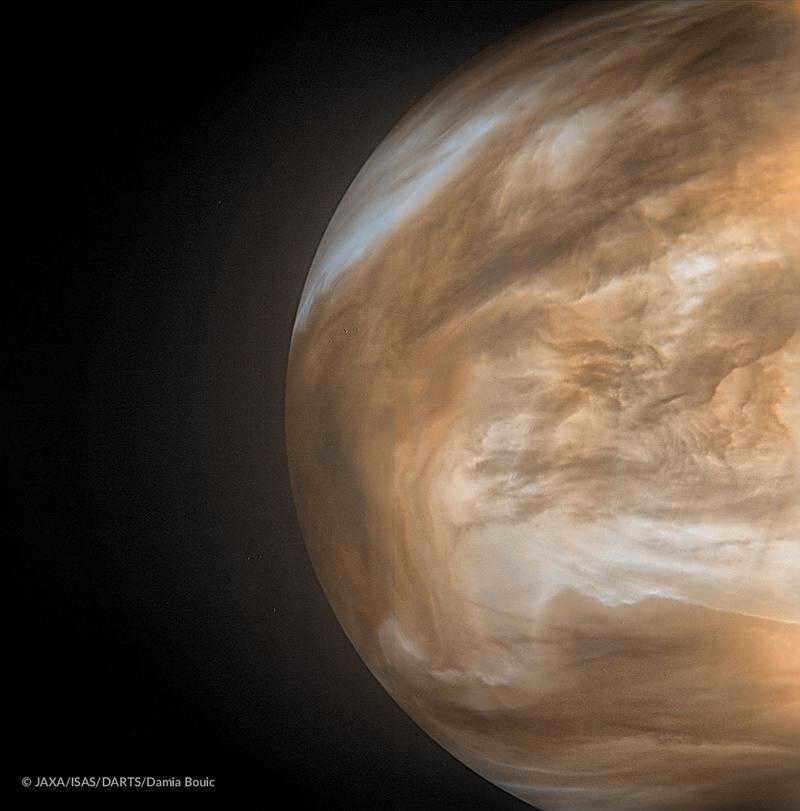
A photograph of Venus taken from its orbit, captured by the Japanese spacecraft Akatsuki.
Venus is characterized by a vast expanse of solidified magma, resulting from the presence of numerous volcanoes, although no active ones have been discovered yet. The planet’s surface remains concealed beneath a perpetual layer of clouds, rendering it perpetually indistinguishable as a monochromatic sphere in photographs. This leaves astronomers with the option of utilizing radio telescopes or landers to explore the planet’s surface.
Due to the extremely harsh conditions – immense pressure and high temperatures – the exploration of the nearest planet to us, Venus, is incredibly challenging. Numerous probes have been sent there, but a significant number of them either lost communication during descent or had a very limited operational lifespan. The longest-lasting probe on Venus to date was the Soviet spacecraft “Venera-13,” which successfully reached the planet’s surface in 1981. It operated for a remarkable 127 minutes, capturing and transmitting several photographs while also conducting various measurements.
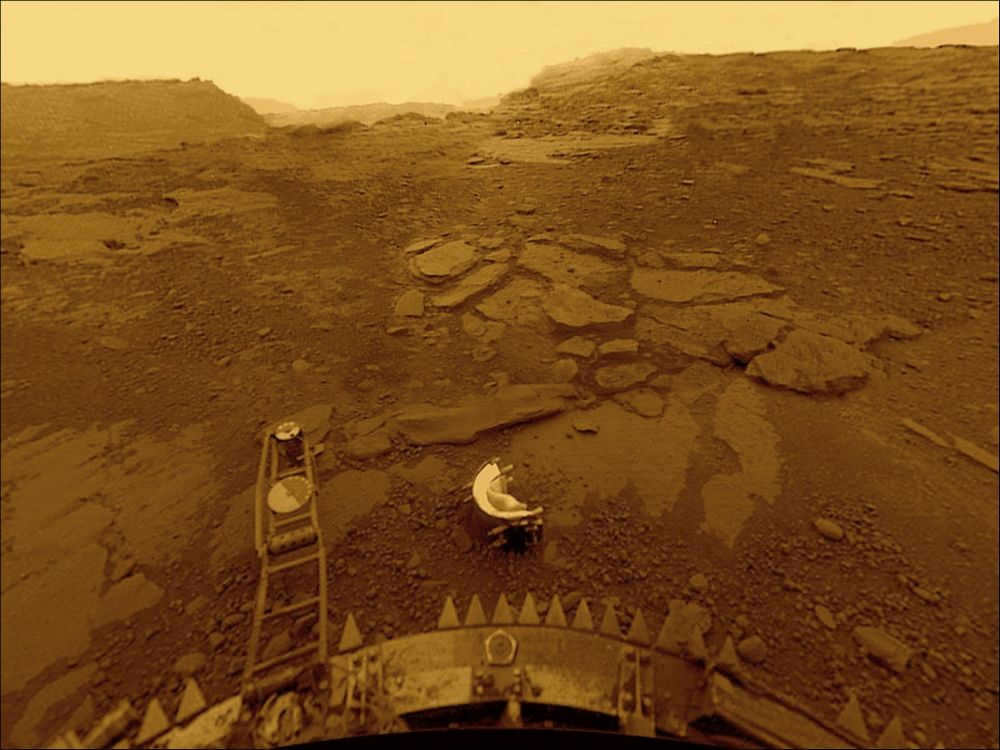
Recently, research on the nearest planet to Earth has been conducted using orbital probes equipped with radio scanning equipment – certain frequencies allow for transparent cloud cover. Additionally, flyby probes on their way to other planets capture images and gather data.
Venus, the nearest planet to Earth, presents a vastly different environment. Comparisons between the two are scarce.
Furthermore, strictly speaking, Venus is not always the closest planet. While its orbit is closest, planets are constantly in motion. As a result, Mercury or Mars can also claim the title of closest planet at different times.
When Mercury becomes the nearest planet.
As Venus moves away from Earth and goes “behind the Sun,” the distance between them can reach 261 million kilometers. In such cases, Mercury may become the closest planet, with distances ranging from 82 to 217 million kilometers.
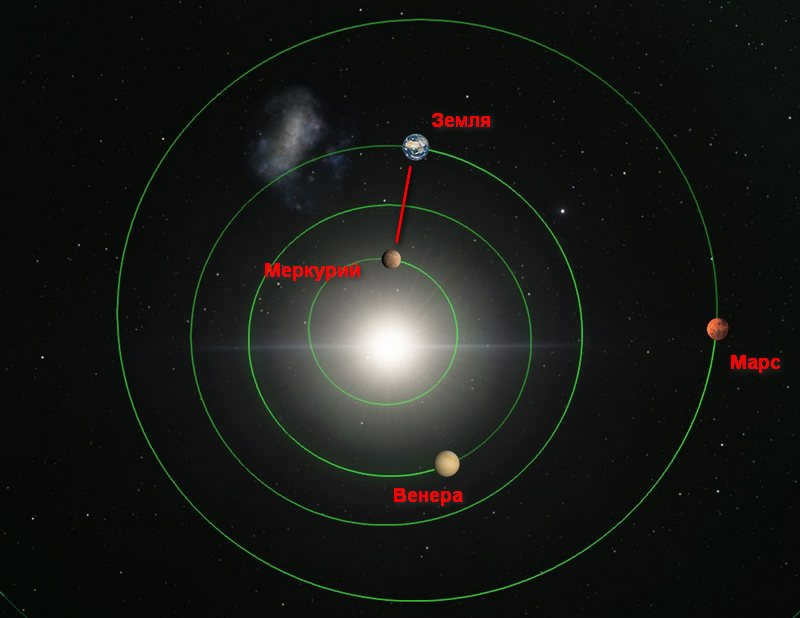

Mercury is the nearest planet to Earth in this position. Its distance is shortened to 82 million kilometers.
As can be observed, the situation is not entirely clear-cut to assert with confidence that Venus is the closest planet to Earth. At times, it can be Mercury. However, that is not the end of the story.
Mars is one of our neighboring planets. It follows Earth’s orbit, making it the fourth planet in our solar system. When Earth and Mars align as closely as possible, it is known as Mars opposition. During this time, the distance between the two planets can be reduced to just 55 million kilometers. This is even closer than Mercury, and even closer than Venus when it is at its closest point in orbit.


When it comes to the closest planet to Earth in the solar system, Mars takes the lead. Its distance from Earth can be reduced to 55 million kilometers.
Therefore, the answer to the question of which planet is the closest to Earth in the solar system is:
Depending on their positions in their orbits, Venus, Mercury, or Mars can be the closest planet at different times.
Those who argue that Venus is the closest planet are partly correct – it is the planet with the orbit closest to Earth. However, planets are constantly moving in their orbits, and the distances between them also change. There may even be a rare situation when all three planets are on the opposite side of the Sun, making the Sun itself the closest to us. But that is an extremely uncommon occurrence.
The Sun’s environment is not what we typically imagine, but now we have a better understanding of its appearance.
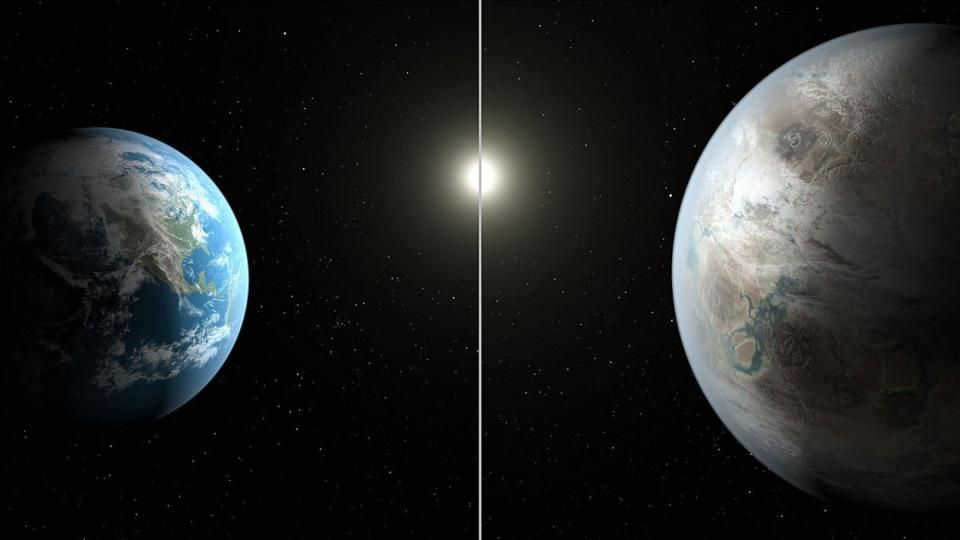
When we gaze up at the night sky, we observe stars with varying degrees of brightness, color, and grouping. Distinguishing whether a star is solitary or part of a multiple system, determining its actual size, or estimating its proximity is an incredibly challenging task for the naked eye. All we can perceive is its luminosity and hue.
Interestingly, the majority of stars visible to the unaided eye are remarkably luminous, blue, and situated at considerable distances. However, what about our nearest celestial companions? Although stars like Alpha Centauri or Sirius are easily identifiable and relatively well-researched, detecting most of our close neighbors necessitates specialized techniques and equipment.
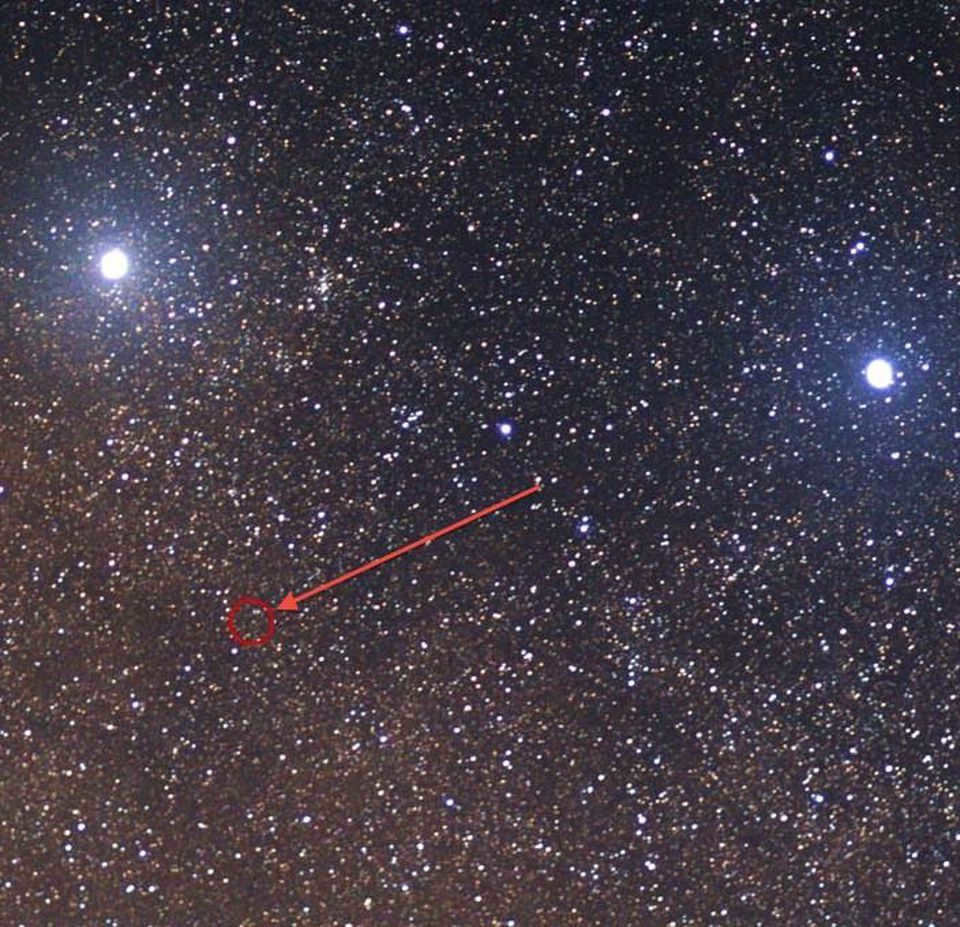
Alpha Centauri stars (located in the top left corner), including A and B, form part of the same triple star system as Proxima Centauri (depicted in the circle). Beta Centauri (seen in the top right corner), which is almost as bright as Alpha Centauri, is located hundreds of times further away, but naturally emits much more light. / Wikipedia
RECONS conducts comprehensive and segmented surveys of the surrounding space, searching for objects that appear to undergo parallax (displacement) when observed at different times of the year. As the Earth orbits around its own star, its position in relation to other stars in the celestial sphere changes.
The movement of nearby stars in relation to a more distant background is similar to the way your thumb “moves” when you hold it at arm’s length and observe it with both your left and right eyes. This phenomenon can be observed when looking at the stars a few months apart.

When the RECONS collaboration began, there were 191 star systems known to be within a distance of 10 parsecs. Currently, there are 316 star systems within this range.
By measuring the parallax, we can accurately determine the distance of these objects, considering “nearest” to be within 10 parsecs (equivalent to 32.6 light-years), which roughly corresponds to a parallax of 0.1 inches (0.254 cm).
Here at 1Gai.Ru, we have carefully examined the latest research conducted by cosmologists and have selected some of the most significant discoveries related to the closest stars to our solar system.
Below are six groundbreaking discoveries made by scientists who study the cosmos.
1. Discovery of 316 star systems within 10 parsecs
An extraordinary breakthrough has been made in our understanding of the universe since the inception of the RECONS mission. The number of star systems known to exist within a 10 parsec radius has increased from 191 to 316. This represents a remarkable 65% growth, with an additional 125 star clusters being identified by both RECONS and other research teams. Furthermore, scientists have been able to accurately measure the parallax of each of these newly discovered systems.
These star systems are predominantly dim in nature, lacking any particularly luminous components. Among the 316 systems, 79 are dominated by red dwarfs, 37 by brown dwarfs, and 9 by other types, primarily white dwarfs. Many of these systems consist of multiple celestial bodies, with the dominant type dictating their overall composition and characteristics.
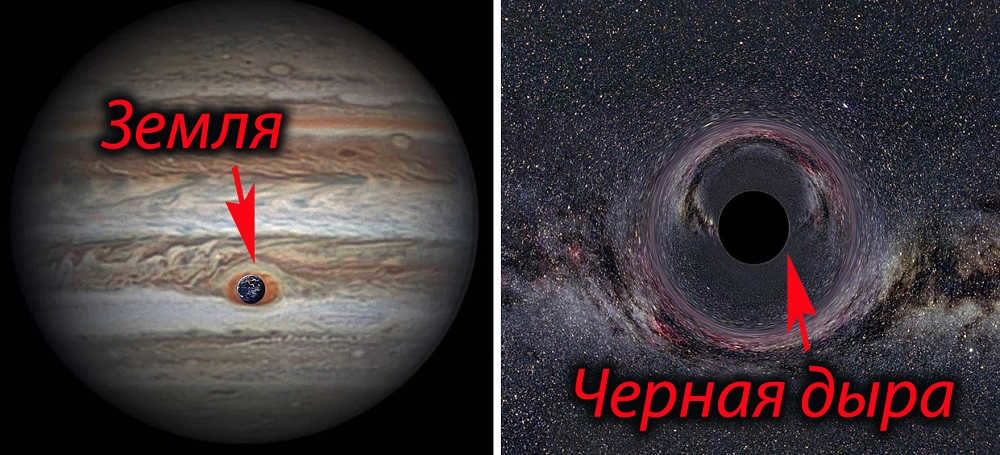
2. Bright stars are exceptionally uncommon, whereas the dimmest stars are overwhelmingly prevalent
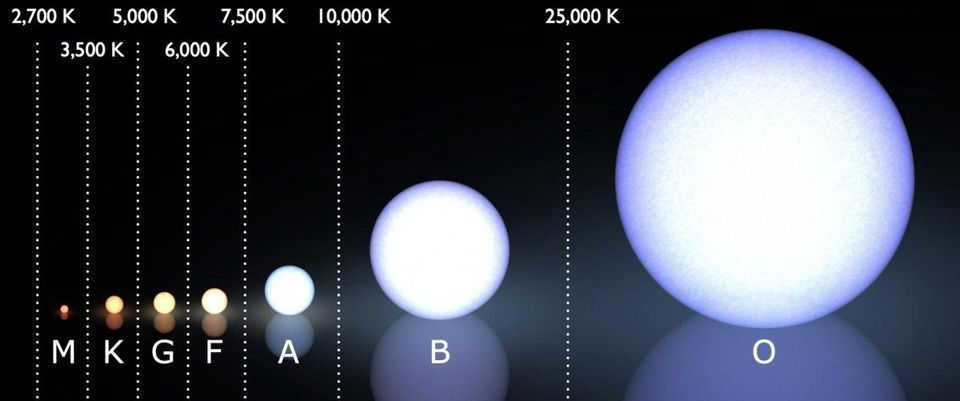
The current Morgan-Keenan system is used to classify stellar spectra, with the temperature range of each stellar class indicated in degrees Kelvin above. The majority of stars in the present day fall into the M-class category, with only one O- or B-class star known to be within a distance of 25 parsecs. Our Sun is classified as a G-class star. (Wikimedia / LucasVB / E. Siegel)
Stars can be classified into seven types: O, B, A, A, F, G, K, and M, listed in descending order from the bluest and hottest to the reddest and coolest.
Through nuclear fusion in their cores, stars burn hydrogen and convert it into helium (or heavier elements). Brown dwarfs, on the other hand, are not massive enough to reach at least M-class status and are therefore considered failed stars.
The remaining cores of Sun-like stars that have exhausted all their nuclear fuel represent the white dwarfs. There have been 316 systems discovered so far, and they are predominantly composed of different types of stars:
- 0 – O-class (0%);
- 0 – B-class (0%);
- 4 – A-class (1.3%);
- 8 are F-class (2.5%);
- 19, including the Sun, are G-class (6.0%);
- 29 – K-class (9.2%);
- 222 are M-class (66.5%);
- 37 are brown dwarfs (11.7%);
- 9 – white dwarfs (2.8%).
This data suggests that among the nearby stellar systems composed of various types of stars (O, B, A, F, G, K, and M), a significant majority of 82% are “populated” by M-class representatives, which are red dwarfs. Compared to the overall composition, our Sun appears rather ordinary.
3. The closest star of type O or B is located at a distance of 79 light years
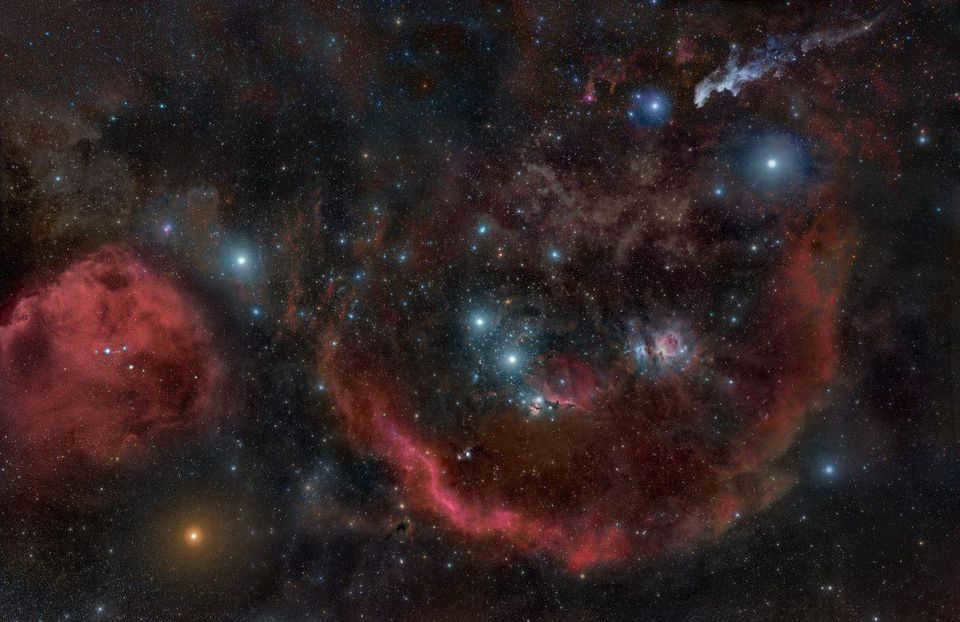
The Orion constellation is accompanied by an extensive network of molecular clouds and some of the brightest stars. While these stars may appear impressive, they are actually much further away than 10 parsecs. They only appear bright because of their inherent brightness. Only 51 stars within 10 parsecs can be seen with the naked eye. (Rogelio Bernal Andreo.)
This particular star is called Regulus, and it is located at the “faintest” end of the B-class spectrum. It is the first brightest star in the Leo constellation and the 21st brightest overall in the night sky. The scarcity of O- and B-class stars is due to their massive size and short lifespan.
Once you move away from the region where stars are actively forming, such as where the Sun is currently located between the spiral arms, you will only find relatively old stars in your vicinity. Regulus, being on the lower end of the Class B spectrum, has been around for approximately 1 billion years.
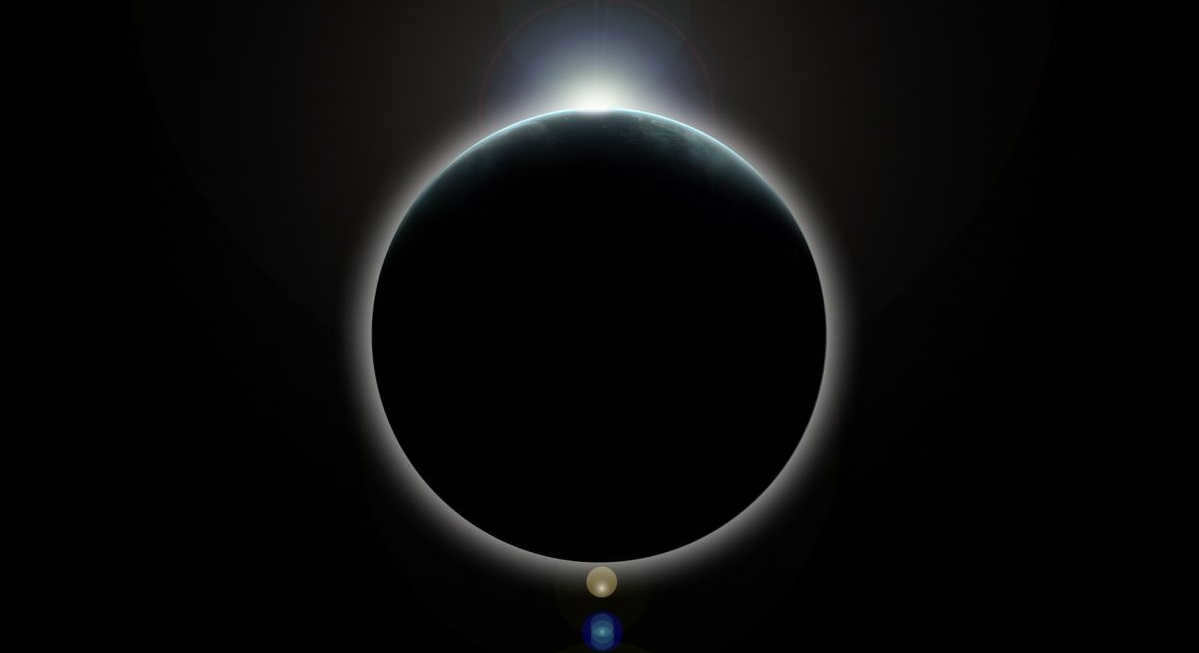
4. There are no neutron stars or black holes within a radius of 10 parsecs
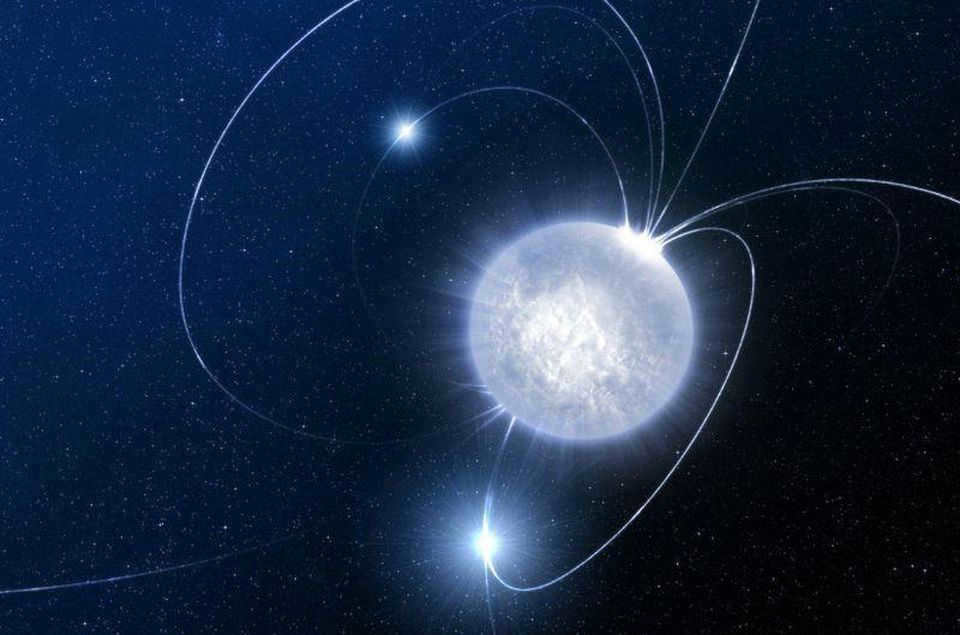
A neutron star is an incredibly dense mass of matter found in the vast expanse of the universe. However, there is a limit to how massive these stars can become. If their mass exceeds this limit, they will collapse inward, leading to the creation of a black hole. (ESO / Luis Calzada)
Truth be told, you must venture much further to stumble upon any of these celestial wonders. In 2007, astronomers made a remarkable discovery when they came across an object known as 1RXS J141256.0 + 792204, affectionately nicknamed “Culvera” and identified as a neutron star.
This neutron star is situated a staggering 617 light-years away from our own planet, making it the closest known neutron star in existence. As for the nearest known black hole, you would need to embark on a journey to A0620-00 (also known as V616 Unicorn or Nova Mon 1975), which lies more than 3000 light-years away.
It is an indisputable fact that out of all the 316 stellar systems that have been discovered within a distance of 10 parsecs, none of them contain black holes or neutron stars. These celestial objects are generally uncommon, at least in the region of the Milky Way that we inhabit.
5. Up until now, a total of 56 exoplanets have been detected within a 10 parsec radius
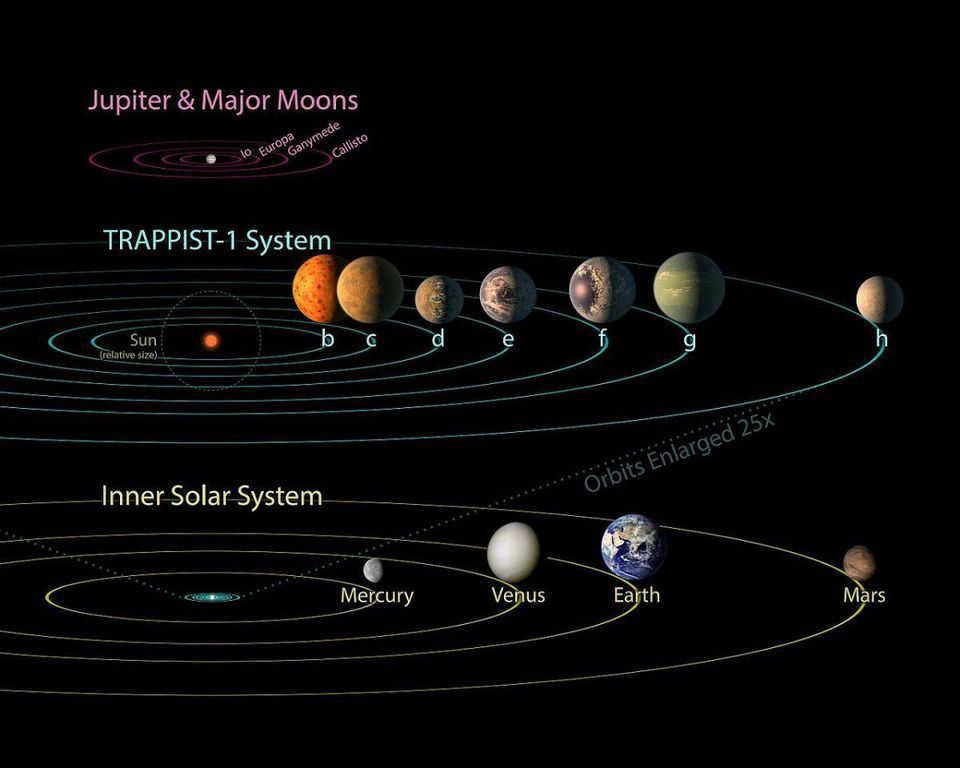
If someone with advanced technology were to study the mass, radius, atmospheric composition, and orbital parameters of the planets in the TRAPPIST-1 system, as well as gather astronomical information about our star, they would be able to distinguish our solar system from a distance. This is because the TRAPPIST-1 system is much smaller in comparison; all seven of its planets could easily fit inside the orbit of Mercury in our solar system. Out of the more than 400 stars in the region, only 26 have been found to have planetary systems. The current “record holder” is Gliese 892, which has six confirmed planets and one additional candidate. While our nearest neighbor, Proxima Centauri b, is just 4.2 light-years away, TRAPPIST-1 is located at a distance of 40 light-years and more than 12 parsecs.
6. It is not unusual for multiple star systems to exist
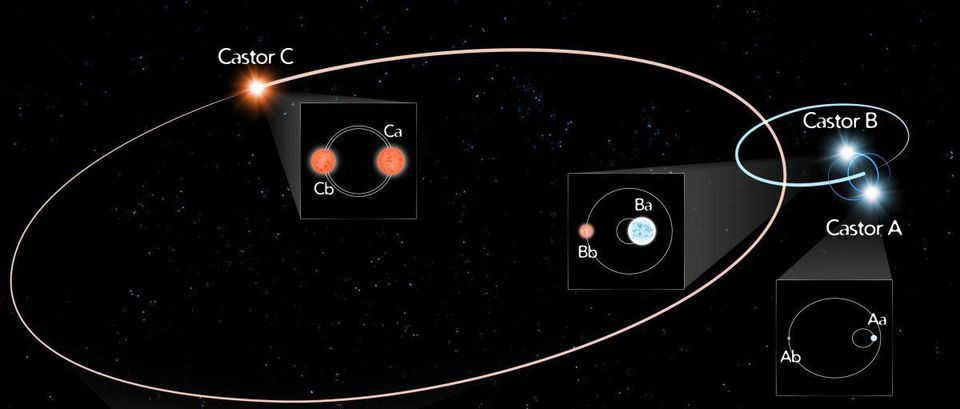
While most of the stars we see in the night sky appear to be individual points of light, a significant number of them are actually multiple star systems. One such system is Castor, which contains the largest number of stars within a 25 parsec radius (NASA/Jet Propulsion Laboratory-Caltech/Caetano Julio)
We can easily identify single stars like the Sun within a 10 parsec radius, but it is also quite common to find double, triple, and even more complex multiple star systems. The closest star system to us, Alpha Centauri, is a triple system, and there are even two systems with five stars – GJ0644 and Alpha Libra.
Recently, over 100 additional stars have been discovered as part of the 316 known multiple star systems. However, scientists wanted to go further, so over the past decade, RECONS has expanded their search to a 25 parsec radius. As of 2014, the project team has made the following discoveries:
- 1,533 single star systems;
- 509 double star systems;
- There are 102 combinations of three elements;
- There are 19 systems with four components;
- There are 4 systems with five components; and even 1 system with six components.
This star system, known as Castor, is made up of six elements and has been known since ancient times. It is the 24th brightest star system in the night sky and is located 51 light-years away from us, which is just over 10 parsecs but not quite 15.7.
Even if we limit our search to only ten parsecs, the faintest systems with the smallest masses can still go undetected. Furthermore, there is no guarantee that what we observe accurately represents the objects and phenomena in the Galaxy and the Universe. However, we are making progress in understanding where and how to search for these missing stars.
Scientists at RECONS have made a confident statement that they have discovered nearly all systems within a 10 pc radius and, based on their findings, the Sun is not a typical star, but rather more massive than approximately 95% of the stars in the Universe.
In the near future, we will be able to definitively answer questions about planets and the existence of life on them, instead of merely speculating. This is an exciting time to explore the vastness of outer space, extending beyond the boundaries of our own solar system.
Cover: NASA/AMES/JPL-CALTECH/T. PYLE
This particular question can be considered a classic because, despite its obviousness, many individuals find it challenging and may feel embarrassed when confronted with it. I once posed this question to a friend and observed their attempts to recall any known stars. Their surprise was evident when I explained to them which star is actually closest to our planet.
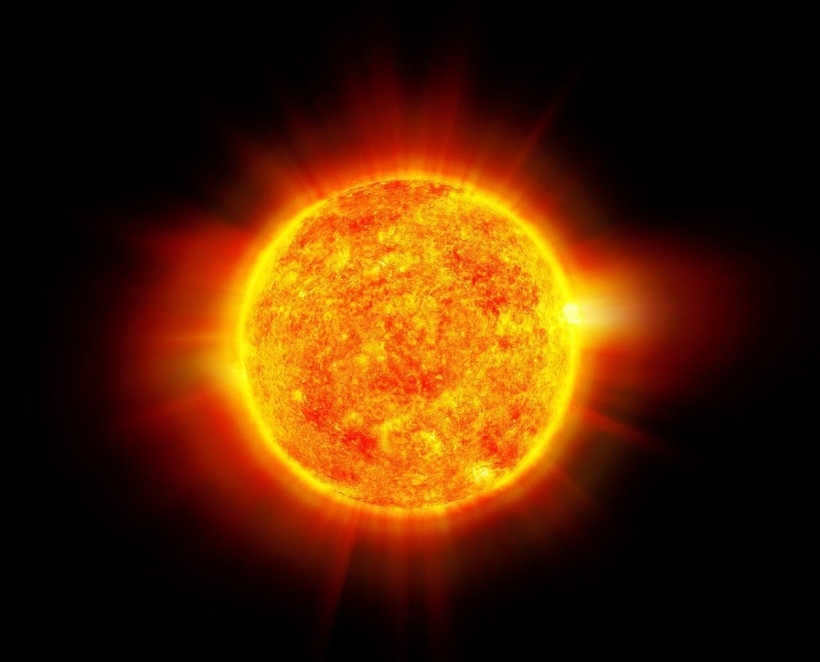
What is the name of the nearest star to our planet?
It is quite clear. The sun is the sole star within our solar system. Its distance is approximately 150 million kilometers. Yeah, that is quite a significant distance 🙁

More stars
We can approach this question from a different perspective and attempt to respond to it, which celestial body is closest to our planet, excluding the Sun. A lot of individuals are aware of Alpha Centauri. which is the third most brilliant celestial body in the sky. Its distance from our planet is 4.35 light-years away. However, it is not just a single celestial body, but rather a triple-star system. The largest celestial body in this system is Alpha Centauri. which is much larger and brighter than our own celestial body. Alpha Centauri B is considerably less massive than our own Sun. The third member of this system is called Proxima Centauri, a red dwarf. This constellation can only be observed from regions in the southern hemisphere. Moreover, distinguishing the red dwarf is impossible without the assistance of advanced astronomical tools.
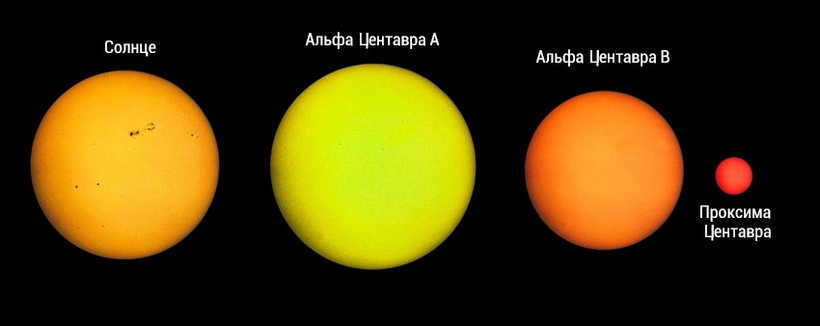
What is the technique for measuring the distance to stars?
One method is to use parallax. You can conduct a simple experiment to do this. All you need to do is make a fist, extend your hand, and extend your thumb. Choose any distant object as your target and point your thumb towards it. When you close one eye and then the other, you will notice that the thumb is either directly in line with the target or slightly off to the side. This is the basic idea behind this technique.
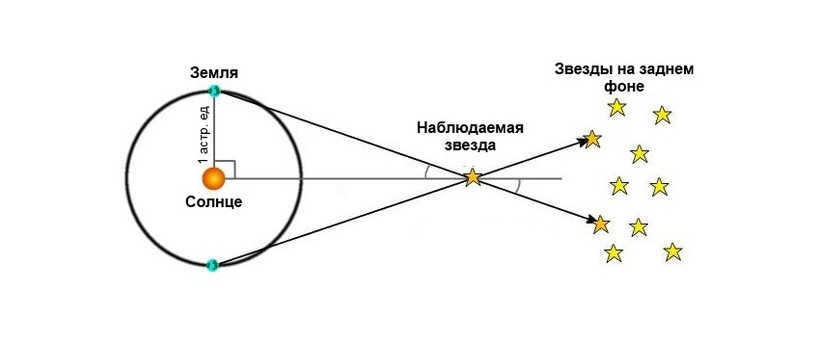
When determining the distance of a celestial body, you can calculate the angle to an object with respect to a specific reference point, which is known as a reference point, during a specific point in the planet’s orbit. This method is applicable only to stars that are within 100 light years from our planet.
The Nearest Stars
Here is a list of the stars and systems that are closest to our planet:
- Alpha Centauri – located 4.35 light-years away;
- Bernard’s Star – situated 5.9 light-years away;
- Wolf 359 – positioned 7.8 light-years away;
- Laland 21186 – found 8.3 light-years away;
- Sirius – located 8.6 light-years away.
Overall, within a span of 14 light-years, we can identify a total of 32 star systems among our neighboring stars.
Most likely, everyone has gazed at the night sky and contemplated the vast distances that separate the Earth from other stars, planets, and galaxies. However, even those who excelled in school may struggle to accurately answer the question, “What is the name of the star closest to Earth?” I, too, found myself among these individuals lacking knowledge on the subject. This lack of awareness is not unfounded, as there are at least two other stars that are relatively near to Earth and are sometimes mistakenly regarded as the closest ones.
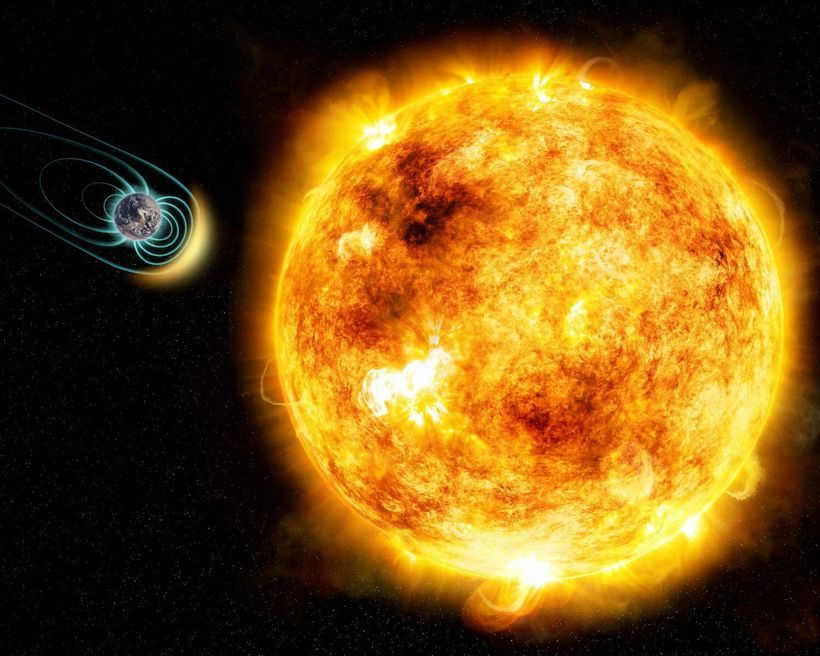
Alpha Centauri star system: which star is nearest to Earth
The question of which star is closest to Earth is both straightforward and tricky. This is due to the fact that astronomy and geography enthusiasts, in particular, may first think of distant stars and star systems.
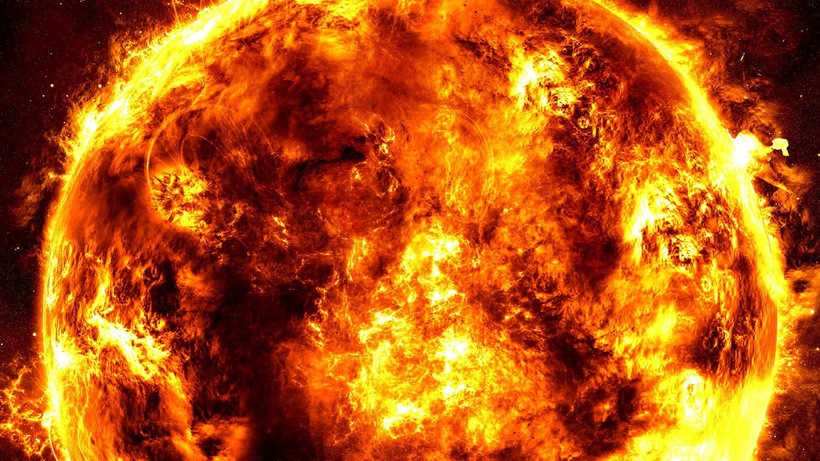
When considering the star system that is closest to Earth, one might immediately think of Alpha Centauri. However, this response is flawed for numerous reasons:
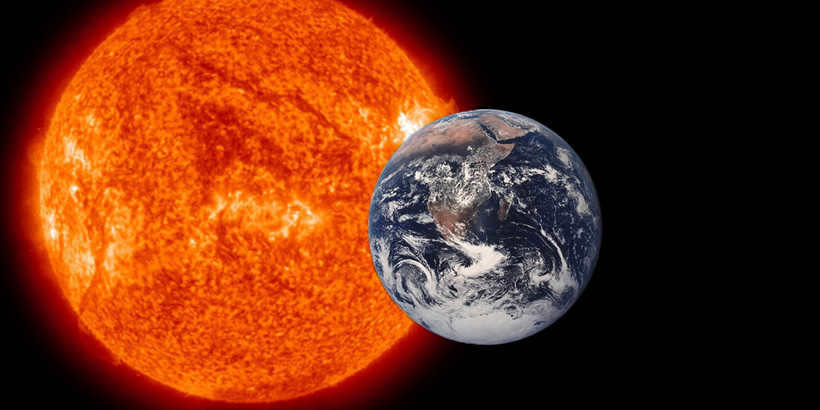
- it is incorrect;
- the Alpha Centauri star system consists of two stars in close proximity to Earth, namely Alpha Centauri A and Alpha Centauri B;
- in addition to these stars, the Alpha Centauri star system also includes a red dwarf known as Proxima Centauri, which is slightly closer to Earth than the other stars in this system.
The Sun is the star closest to our planet, Earth
It’s quite simple to answer this question, but not everyone realizes it right away. It’s actually quite logical, considering that we reside in the solar system. In fact, this fact alone logically implies that the Sun is the nearest star to us because it is the star that provides the Earth with heat, allowing life to exist on our planet. The Sun is only around 150 million kilometers away from Earth. In the grand scheme of the vast cosmos, this is an incredibly small distance. However, the red dwarf star Proxima Centauri, which can be found in the Alpha Centauri star system, is the nearest star to our Solar System. It’s understandable to mistake Proxima Centauri as the closest star to Earth. Although the Sun is not the brightest star visible from our planet, it is still in close proximity. Therefore, when pondering the question “what is the nearest star to planet Earth,” stars like Sirius, Barnard’s Star, or Eridanus come to mind. However, these stars are much further away.
As a child, I found glasses to be quite bothersome. Whenever I tilted my head upwards to gaze at the dazzling stars, my glasses would inevitably slip off my nose and land in the grass. I would then have to search for them, wiping away the dew and dirt that clung to the lenses. To fully appreciate the beauty of the starry sky, I would always remove my glasses. However, this presented another dilemma – without my glasses, I could only see the brightest stars. Oh, if only someone had enlightened me about the star that was closest to the Earth at that time, I would not have needed my glasses to admire it!

What is the nearest star to Earth
The nearest star to us is the Sun.
Indeed, it is also a star, and it is not the biggest in the universe. However, it appears enormous to us compared to other stars due to its relatively close proximity.
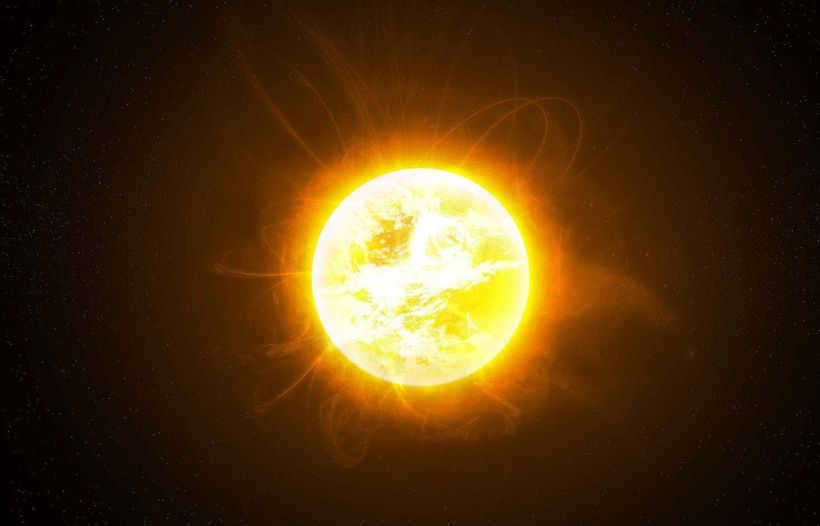
Not too distant from us in the grand scheme of the cosmos is the Alpha Centauri system, which boasts three stars that are the closest to our own.
- Alpha Centauri A
- Alpha Centauri B
- And in third place, it’s not Alpha Centauri C as you might expect, but rather Proxima Centauri 🙂
Sirius, the most brilliant star in the night sky, comes in at a mere seventh on this ranking. It’s number seven on the list. And Polaris doesn’t even make the top fifty.
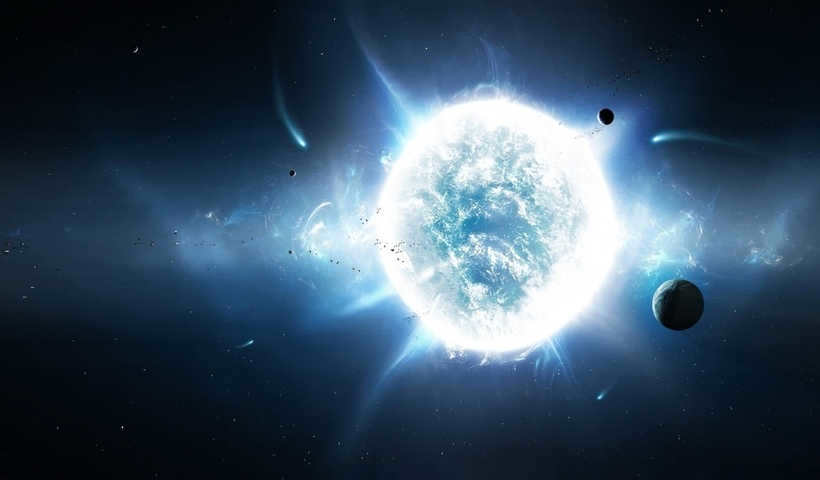
The Dangers of Staring at the Sun
Unfortunately, even though it is possible to see the Sun with poor eyesight, it is highly advised to avoid looking at it for an extended period of time. This is because the human eye is not designed to handle prolonged exposure to bright light, and staring at the Sun for more than three seconds can lead to irreversible damage to the retina. This can result in a significant loss of vision or complete blindness.

Even in the event of solar eclipses, when the intensity of our heavenly body’s light reduces significantly, it is essential for us to adhere to safety measures:

- Put on a pair of sunglasses with a dark tint.
- Peer through a fragment of a bottle made of dark-colored glass (or regular glass that has been exposed to smoke from a fire).
- Gaze through a plastic bottle of a dark hue.
- Observe through a piece of photographic film.
- View the Sun through the camera of a mobile phone.
However, if despite any form of protection, you experience discomfort in your eyes, such as a sensation of pain or an inclination to avert your gaze, it is advisable to prioritize your safety and redirect your gaze away from the sun. Indicators that your eyes require rest include the presence of flashing spots when you close your eyelids.
Gazing at the night sky filled with stars is an unparalleled experience! It cannot be equated to anything else. I once spent three long months at sea, sorely missing my family. As I looked up at the sky, I imagined that someone dear to me on another part of the continent was also gazing at the sky. I mentally conveyed my greetings through the stars. Those moments were quite melancholic, and during the daylight hours, I yearned to transmit the same greeting through a ray of sunshine.

Which celestial body is nearest to our planet
Dear friends, I want to express my gratitude to all of you who provided an answer to this question. I was actually planning to search for it on Google! I thought I would study about stars and become knowledgeable on the subject. And here it is, the answer is the sun. It’s like, “Really? Is that all? Just like that?”
It reminds me of what my father once told me, that stars are different from planets because they emit light, while planets merely reflect the light of stars. This realization makes us understand that the sun is the largest celestial body that we can observe.

The Importance of the Sun
When considering the bigger picture, it can be quite overwhelming. The sun, the Earth, the air, the water – they are all essential to our existence. Whether we appreciate nature or not, we are inherently connected to it. We are a part of this vast world, and without the gravitational pull of our planet, the perpetual darkness and coldness would render life impossible. Moreover, the absence of breathable air would also be catastrophic.
I vividly recall some mesmerizing experiments from my high school biology class. We witnessed the creation of air, although we were not the ones directly responsible. Our task was simply to water the flowers on the windowsill. As you may know, all green plants generate oxygen as a by-product of their metabolic processes. While it may be incidental for them, it is an essential element for our survival. Do you remember the reaction involving chlorophyll? Indeed, it occurs with the aid of sunlight.

A divine present.
The sun assists in the germination of plants, provides warmth and light for animals. That is why the Sun is often considered a divine being. All religions around the world have a solar deity, also known as the Sun God:
- Ra – in ancient Egypt;
- Yarilo – in Slavic mythology;
- Helios – in Greek mythology;
- Surya – in ancient Indonesia;
- Amaterasu – in Japanese mythology;
- Inti – in South Mesoamerica, and so on.
Religions that worship the One God are also linked to the Sun. In reality, their religious celebrations align with the days of solstice as well as the ancient calendar and ceremonial festivals dedicated to the worship of the Sun.

Is there anyone among you who does not enjoy gazing up at the majestic night sky? Those twinkling specks of light seem to murmur to us, “The cosmos stretches beyond imagination. You are not solitary in this vast realm.” Every summer, during my stays at my grandmother’s humble abode in the countryside, I would endeavor to tally up the countless stars, yet my efforts were always in vain. It is only now that I comprehend the futility of solving this enigma, relying solely on my own ocular senses and the absence of obtrusive clouds in the celestial expanse.

What is the total number of stars in the Milky Way galaxy?
Planet Earth is a member of the Milky Way galaxy, which is home to a vast number of stars. However, only a fraction of these stars are visible to us using telescopes. Determining the exact count of stars in our galaxy poses a significant challenge for several reasons:
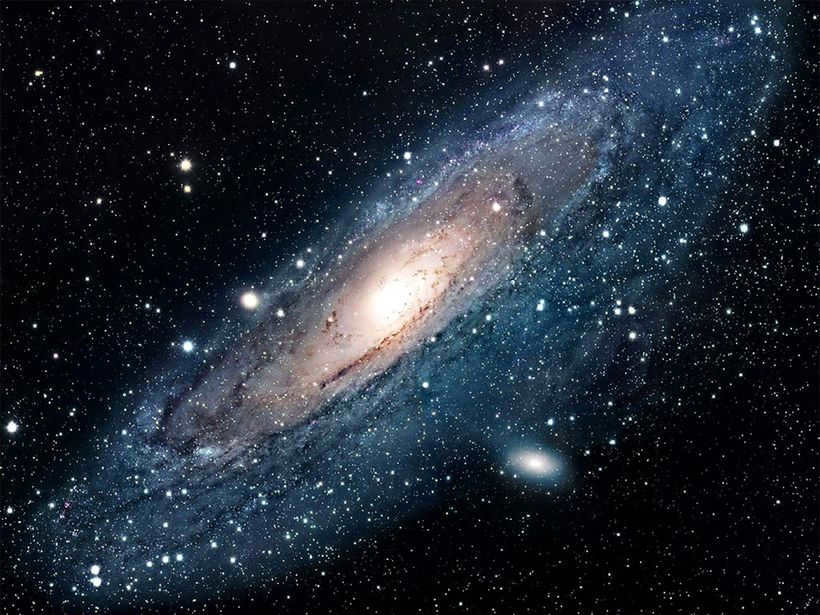
- The color spectrum of the stars is refracted (experiencing a red shift) as the distance from the Earth to the stars increases, which causes them to become invisible.
- The visibility of stars is affected by atmospheric pollution and any changes in light, such as sunset.
- The ability of a star to be detected from our planet is directly related to its size and mass.
Which star is the nearest to our planet?
The answer can be found, figuratively speaking, right in front of us. The star that is nearest to us is none other than the Sun.

Indeed, this is the entity that eludes our vision during nighttime. Alpha Centauri A and Alpha Centauri B clinch the second and third spots, exclusively observable in the Southern Hemisphere. And what celestial body can we behold in the Northern Hemisphere? It is none other than Bernard’s star, situated 5.9 light-years away from our home planet. These are some captivating particulars concerning an entity as well-known as the Sun:
- It is merely approximately 150 million kilometers away from Earth.
- The Sun’s mass constitutes 99.8% of the entire mass of its system.
- It primarily consists of hydrogen, comprising 74% of its composition.
- At present, the surface temperature of the Sun is around 5,778 K. However, regrettably, this value rises annually, causing alterations in our ecosystem. The planet relies on the Sun for its survival, hence the significance of this nearest star cannot be underestimated.
You may be familiar with the fact that we reside in a location known as the solar system. It is a small region within the Milky Way galaxy where the Sun holds the utmost significance. During our school days, we were educated about the composition of the cosmos, and I am certain that our planet is merely a tiny dot in the immense and boundless Universe. All forms of life that exist are the outcome of countless eons of evolution. However, none of this would be feasible without the neighboring star recognized by all as the Sun.
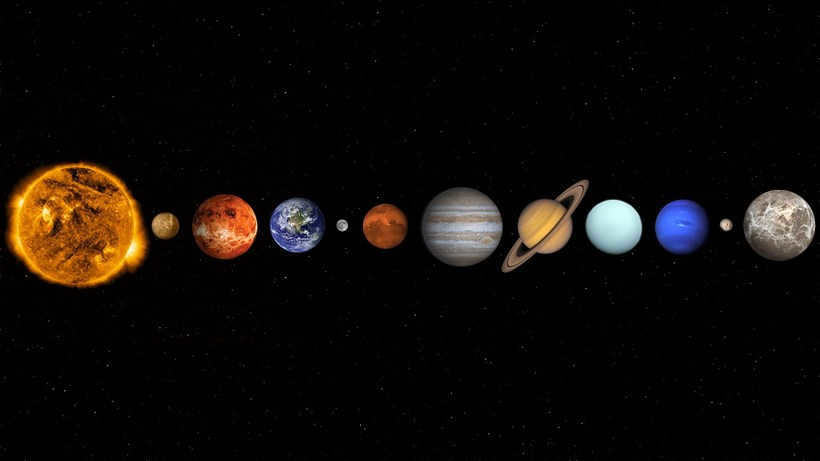
What is the nearest star to our planet?
It is common knowledge that within the observable Universe, there exist numerous stars of various sizes and spectral classes. Moreover, outer space as a whole is teeming with trillions of these celestial bodies. Interestingly, the nearest star to our planet is a G2V (yellow dwarf) known as the Solar in Latin and commonly referred to as the Sun by Russian speakers. This star primarily consists of hydrogen and helium, which are responsible for the chemical fusion process known as thermonuclear reaction. Additionally, it contains other substances such as:
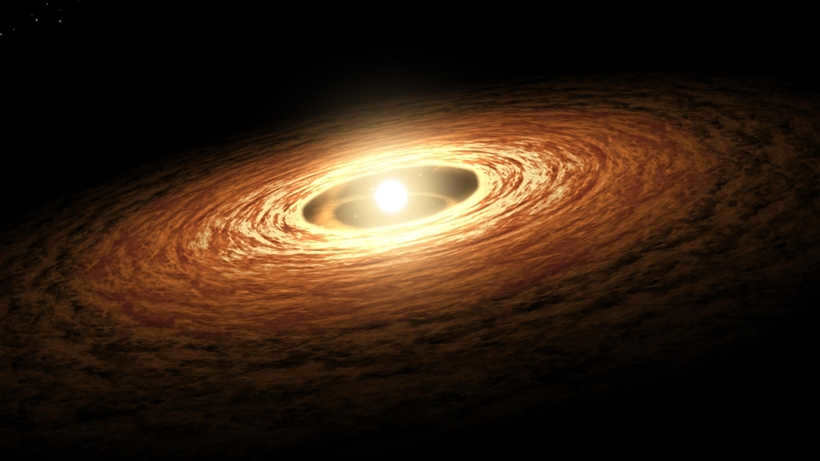
- Iron.
- Silicon.
- Nitrogen.
- Calcium.
- Chromium, and so on.
The level of these chemical elements is extremely low. According to scientific studies, the Sun has been burning for approximately 5 billion years. It has only completed half of its lifespan, as the star’s resources are limited. This implies that in several billion years, it will enter a new phase, resulting in a catastrophic outcome for life on Earth.
The Sun’s Evolution
As the Sun goes through its life cycle, the amount of hydrogen decreases while the amount of helium increases. In about 1 billion years, the Sun will shine 10% brighter, leading to a stronger greenhouse effect on Earth that could hinder the development of carbon-based life forms. This trend continues, and in approximately 3 billion years, the Sun will become 40% brighter, making it impossible for liquid water to exist on our planet. Eventually, the Earth will resemble what it is today, while Venus and the Sun will both expand to become red giants. Eventually, the Sun will cool down, leaving only its core.
If you want to test someone’s knowledge, you can inquire about the nearest star to our planet. Many individuals will promptly mention Betelgeuse or Sirius. However, there’s a twist. Naturally, the closest star to Earth is the Sun (150 million kilometers away). But, aside from the Sun, which celestial object is the nearest star to our planet?
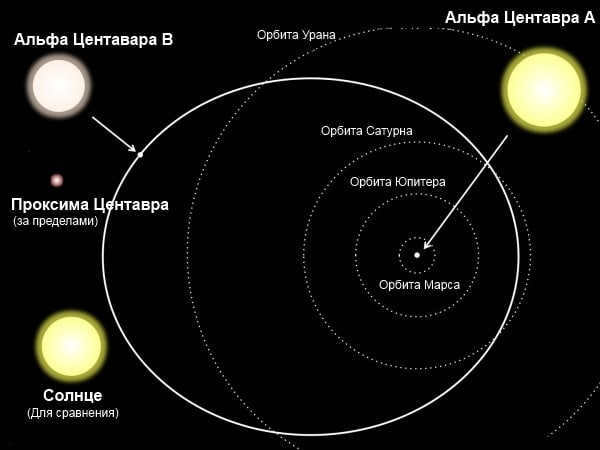
Comparing the Alpha Centauri system with our solar system

Aside from the Sun, Alpha Centauri is considered to be the nearest star to Earth. It is ranked as the third brightest star and is located a mere 4.37 light-years away. However, it is important to note that Alpha Centauri is not a singular entity, but rather a triple system. The system consists of a binary pair that revolves around a shared center of gravity every 80 years. Alpha Centauri A shines brighter than the Sun, while Alpha Centauri B is slightly less luminous. The third member of this system is known as Proxima Centauri, which holds the distinction of being the closest star to Earth at a distance of 4.24 light-years.
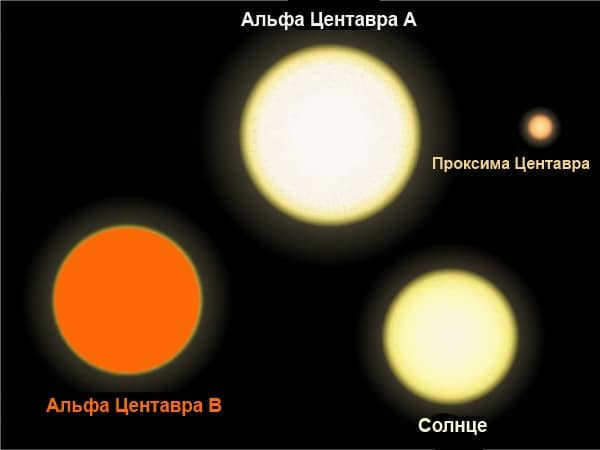
Comparison of the sizes of the stars in the Alpha Centauri system and the Sun
The Alpha Centauri system is situated in the Centauri constellation, which can only be observed from the southern hemisphere. However, even in that location, the star cannot be seen with the naked eye due to its faintness. A powerful telescope is needed to observe it. To put things into perspective, it would take the New Horizons spacecraft 78,000 years to reach Proxima Centauri.
For the past 32,000 years, Proxima Centauri has been the closest star to Earth and will retain that position for another 33,000 years. After 26,700 years, its distance will decrease to 3.11 light-years. Following that, the closest star to Earth will be Ross 248.
The nearest star to Earth in the northern hemisphere is Barnard’s Star, a red dwarf located in the constellation Serpentor. However, it is not visible to the naked eye due to its dimness. If we only consider stars that can be observed without the use of specialized equipment, the closest one is Sirius, which is located 8.6 light-years away. Sirius is twice the size and mass of the Sun.
An animation showcasing the movement of Barnard’s Star.
A skilled tarot reader will provide answers to the following questions:
What does the future hold for you? How will your relationships turn out? What is the best decision to make?

What is the method used to calculate the distances to the stars?
In order to calculate the distance from Earth to a star, scientists use a method called parallax. What does this entail? Simply extend your arm and place your finger in front of a faraway object. Close one eye at a time and you will notice that the object appears to move. This phenomenon is known as parallax.

A visual representation of the parallax method
To determine the distance to a star, we need to calculate its position when our planet is on one of its orbits (during the summer months). We then wait for 6 months until our planet is on the opposite side of its orbit, and measure the star’s position again. By measuring the angle between the two positions, we can calculate the distance to the star. This method can be applied to any object within a distance of 100 light years.
In the vicinity of the system, there are 45 stars located approximately 17 light years away. It is estimated that there could be up to 200 billion stars in the galaxy. However, some stars are so dim that they cannot be detected.
A compilation of the 20 stars nearest to Earth
This compilation displays the nearest stars and star systems and their approximate distance from Earth in light-years. Some of them consist of multiple stars but are considered part of a specific system. Here they are:
- Alpha Centauri, approximately 4.2 light-years away;
- Bernard’s Star, approximately 5.9 light-years away;
- Wolf 359, approximately 7.8 light-years away;
- Laland 21185, approximately 8.3 light-years away;
- Sirius, approximately 8.6 light-years away;
- Leiten 726-8, approximately 8.7 light-years away;
- Ross 154, approximately 9.7 light-years away;
- Ross 248, approximately 10.3 light-years away;
- Epsilon Eridana, approximately 10.5 light-years away;
- Lecaille 9352, approximately 10.7 light-years away;
- Ross 128, approximately 10.9 light-years away;
- EZ of Aquarius, approximately 11.3 light-years away;
- Procyon, approximately 11.4 light-years away;
- 61 Swan, approximately 11.4 light-years away;
- Struve 2398, approximately 11.5 light-years away;
- Groombridge 34, approximately 11.6 light-years away;
- Epsilon of Indian, approximately 11.8 light-years away;
- Dx Cancer, approximately 11.8 light-years away;
- Tau of China, approximately 11.9 light-years away;
- GJ 106, approximately 11.9 light-years away.
According to NASA, there are a total of 45 other stars that exist within a distance of 17 light-years from the Sun. Some of these stars are so small and faint that they pose a significant challenge to detect. However, advancements in technology may enable scientists to discover star systems that are even closer in the future.
- What is the number of satellites orbiting the Earth?
- Is the shape of the Earth spherical?
- What is the reason behind the spherical shape of the Earth?
- Does the Earth possess any rings?
- What is the size of the Earth?
- How old is the Earth?
- What is the mass of the Earth?
- What is the gravitational force exerted by the Earth?
- What is the weight of the Earth?
- Comparison of the Earth’s weight with other objects;
- What is the size of the Earth?
- What is the diameter of the Earth?
- What is the circumference of the Earth?
- What is the density of the Earth?
- What is the magnetic field of the Earth?
- Geomagnetic reversal
Position and motion of the Earth
- Earth, Sun and Moon;
- What causes day and night to change?
- Milankovitch cycles
- Solar day
- How long does it take for sunlight to reach Earth?
- Earth’s rotation around the Sun;
- What is the Earth’s rotation?
- Why does the Earth rotate?
- What happens if the Earth stops rotating?
- Why is the Earth tilted?
- The magnetic north pole
- Earth’s orbit;
- Precession of the equinoxes
- Distance from the Earth to the Sun;
- Nearest star to Earth;
- Closest planet to Earth;
- How long a day lasts on Earth;
- Winter Solstice
- How long is the Earth’s year;

